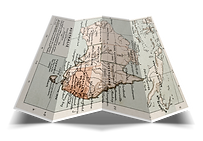ELEMENTARY REVIEW
APPS AND RESOURCES
THE
City of Bones
The History of Drumheller's coal.
By Justin Hume
 The City of BonesA historical fiction account based around the establishment of Drumheller. |  Uses of CoalThe book describes dozens of the various uses of coal. |  Joseph TyrrellA very important character in the founding of Drumheller. |
|---|---|---|
 Sam DrumhellerThe man who started it all, with his new found friend Mr. Greentree. |


Age Appropriate
9.5
9

Presentation Effectiveness
8

Engagement
Citizenship
10

7
Perspective
Range


SCORE
9
Respect


52.5 / 60 =

A
A
Overview:
City of bones is a storybook chalk-full of accurate history, side-splitting puns and metacognitive symbolism. My review is of course biased because this is my own self-published picture book (that is still in an early draft), but is nevertheless a value in discussing the worth of the story in Education. Most importantly, there is a great need for quality literature focusing on the development of an area so vital to Alberta's historical heritage—namely the badlands—and so I took it upon myself to author a quality piece of literature. While I do enjoy storytelling, I full admit that I am not a professional and the story is subject to errors, faults, and improper literature writing practices; nevertheless in this case I know that over time and experience I will be able to carve this work into a masterpiece. The picture book is aimed towards creating a humorous and cognitively stimulating, yet historically accurate depiction of the events immediately preceding the founding of the then village of Drumheller to the events of the shutdown of the coal mines and transition to Dinosaur tourism.
The genre of the book would perhaps be most accurately described as historical fiction.
Lesson Applications:
The story may be used as an introduction to the history of Drumheller. The book is best read aloud to the students by the teacher, periodically stopping along the way in order to ask relevant questions to students. Currently the book lacks much illustration, but when it is completed it will have colorful and accurate representations of Drumheller and the Badlands. The value of the book really shines when it is used as a segway into deeper thought—levels of analysis, creation, and evaluation on Bloom's Taxonomy. The book lacks an absolute ending, instead choosing to inquire what the audience thinks, requiring them to research current Drumheller to find the answer. This meets 4.1.4 of the Program of Studies, helping to meet outcomes such as:
-
In what ways do the physical geography and natural resources of a region determine the establishment of communities?
-
How are natural resources used by Albertans?
The book is most effectively followed up by questions regarding the ending. The teacher can ask questions such as: "What do you think happened to Drumheller? How could we find out?" The teacher may also choose to invite the students to use the textbook, online resources such as Google Earth or www.dinosaurvalley.com to help the students research the ending. Learning can also be extended by asking if any of the uses of coal in the book are less used today than they were before. The ultimate resultant task would place the students as authors, writing the ending of the story themselves, including who they think the narrator Annie is.
Strengths
-
The story is historically correct and makes numerous attempts at humor.
-
The book's diction highlights the geography and the dangers and necessity of natural disasters.
Weaknesses
-
The story is unconventional in having a beginning middle and end, as it lacks a proper ending and a climax or descent. Some students may be disappointed.
-
The book is more interested in the journey of history than in a cohesive story; the "moral of the story" is convoluted and open to interpretation
Modifications
-
An interesting fictional storyline could run parallel so as to increase engagement.
-
A focus on the coal mining strike would have been interesting.